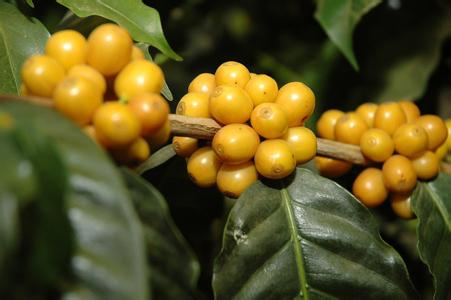Table for describing the acidity and flavor of Nicaraguan coffee beans
Table for describing the acidity and flavor of Nicaraguan coffee beans
Nicaragua is an economically backward agricultural country, is one of the poorest countries in Central America, the unemployment rate is very high, people live in poverty, and coffee is Nicaragua's pillar industry, producing nearly 100,000 tons of coffee beans every year. Due to the poor economic foundation, the coffee industry is still relatively backward, and coffee farmers are also in a relatively poor state.
Although Nicaragua is a country with a large territory in Central America, it is not a big producer in the coffee world, and its output and reputation are much weaker than that of its neighbor Costa Rica. But the high-quality Nicaraguan coffee is in the forefront of coffee beans in the world and enjoys a good reputation.
Dry aromas are full of chocolate, with aromas of hazelnut and cocoa. The wet aroma also has the smell of chocolate, accompanied by the smell of orange peel. With the baking degree of city+, the bright lemon acid and long cocoa finish are wonderful.
Dry aroma (1-5): 3.8
Wet aroma (1-5): 3.8
Nicaragua is one of the major producers of coffee in the world, producing high-quality coffee. The well-known coffee chain Starbucks also has cooperative coffee farmers in Nepal. Nicaragua has a unique environment, which is located in central Central America, bordered by the Pacific Ocean to the west and the Caribbean Sea to the east. The highlands in the north and the coastal plains in the east are part of the Central American volcanic belt. The eastern plain is high-temperature and rainy, with a tropical maritime climate. The fertile volcanic soil, coupled with hidden planting methods, provides a good growing environment for coffee.

Important Notice :
前街咖啡 FrontStreet Coffee has moved to new addredd:
FrontStreet Coffee Address: 315,Donghua East Road,GuangZhou
Tel:020 38364473
- Prev

Sun Yega Shifeiwaka Coffee Flavor description texture Grinding scale quality
Sunburn Yega Chefevoca Coffee Flavor description Taste Grinding scale quality Drima Zede (candle candle, the name of Yega Xuefei) means Best Approach in the local dialect. According to the information provided by the original factory, this Yega Xuefei is a series of tailor-made products developed based on 90 + years of experience. The ancient treatment of the sun makes it difficult to get a pure flavor, but
- Next

Grinding scale for Flavor description treatment of Coffee beans in Erida Manor, Panama
Elida Manor has a total area of 65 hectares, more than half of which are located within the Baru Volcano National Park, 30 hectares of the estate are planted with coffee trees, and the remaining 35 hectares are virgin forests. Coffee plantations range from 1670 to 1850 meters above sea level, making it one of the two highest coffee farms in Panama. (the other estate with these elevations should be located in the Vulcan Valley.
Related
- Detailed explanation of Jadeite planting Land in Panamanian Jadeite Manor introduction to the grading system of Jadeite competitive bidding, Red bid, Green bid and Rose Summer
- Story of Coffee planting in Brenka region of Costa Rica Stonehenge Manor anaerobic heavy honey treatment of flavor mouth
- What's on the barrel of Blue Mountain Coffee beans?
- Can American coffee also pull flowers? How to use hot American style to pull out a good-looking pattern?
- Can you make a cold extract with coffee beans? What is the right proportion for cold-extracted coffee formula?
- Indonesian PWN Gold Mandrine Coffee Origin Features Flavor How to Chong? Mandolin coffee is American.
- A brief introduction to the flavor characteristics of Brazilian yellow bourbon coffee beans
- What is the effect of different water quality on the flavor of cold-extracted coffee? What kind of water is best for brewing coffee?
- Why do you think of Rose Summer whenever you mention Panamanian coffee?
- Introduction to the characteristics of authentic blue mountain coffee bean producing areas? What is the CIB Coffee Authority in Jamaica?

